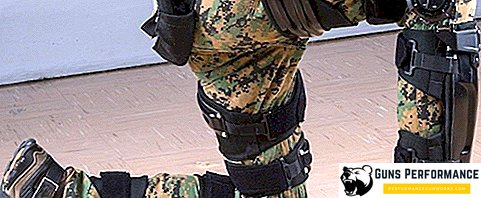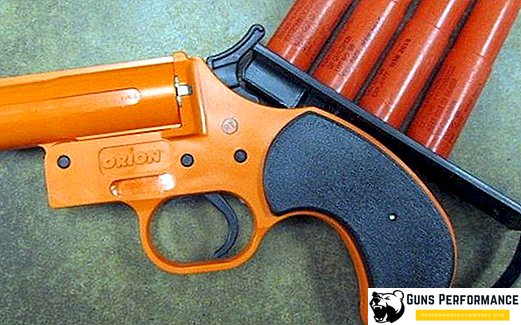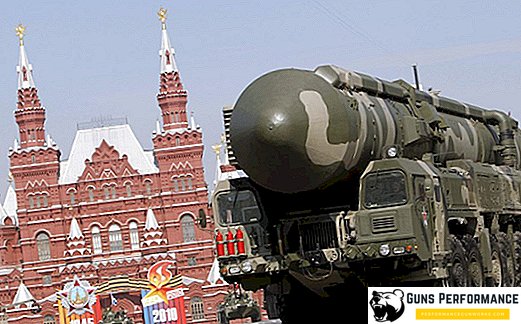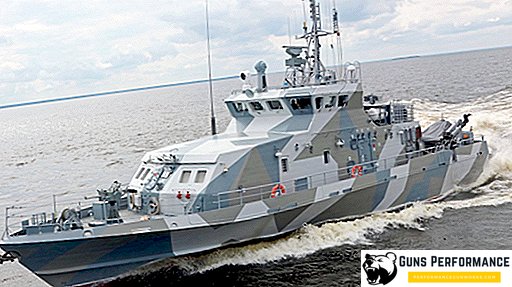
Project 21980 "Rook" is a series of high-speed, maneuverable and multi-purpose boats designed to protect the waters of the basing points, as well as short-range approaches to them from sabotage and terrorist threats. In addition, the ships of this project will be used to protect the state border of our country. Due to the peculiarities of their design, as well as equipping boats with the latest equipment and weapon systems, they are able to perform tasks that were previously performed by vessels of much greater displacement. It should be noted that ships of this class had not previously been not only in the Russian, but also the Soviet Navy.
Boats of the "Rook" type are able to detect objects in the water column at distances of 300 meters, to conduct a bottom survey at depths of up to 200 m (at sea roughness up to 3 points and vessel speed up to 8 knots). In addition, these ships can conduct studies of the bottom and underwater objects using remote-controlled uninhabited underwater vehicles. There are diving equipment and a pressure chamber on the boats of the project.
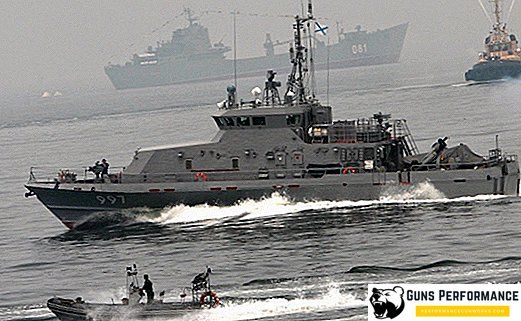
The anti-diversion boat (PDKT) of project 21980 was developed by the designers of Vympel OJSC (Nizhny Novgorod), serial production of these ships was established at the Zelenodolsk plant named after Gorky, and then at the Eastern shipyard and the Vympel shipyard. The first boat of this project was laid in 2008, a year later he was launched.
Currently, 12 anti-sabotage boats of the project 21980 are already in service, another 5 are being built, and one Rook is undergoing tests.
History of the creation of the project 21980 "Rook"
The boat of project 21980 was developed at Vympel Design Bureau by order of the Russian Navy, and supervised the work of A. Rechitsky. The ship was originally designed to perform a wide range of combat missions, but the main one was to be a fight against sabotage and terrorist threats.
The lead ship of the project was laid in 2008 at OAO “Zelenodolsk Plant named after A. M. Gorky”, it received the number P-104. On March 25, 2009, the boat was launched and after completion, its factory tests began. After their successful completion, the P-104 was accepted into the Baltic Fleet. In 2011, the P-104 took part in the Lenexpo 2011 international naval exhibition.
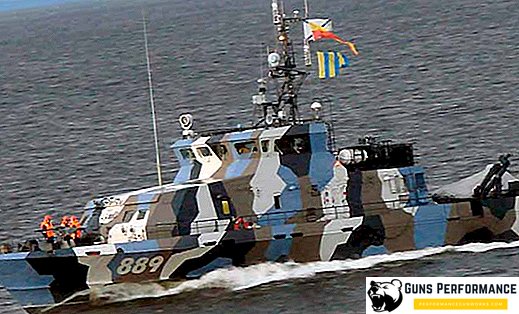
In May 2010, the second launch of Project 21980 was laid in Zelenodolsk. He received the tactical number P-191. A diving bell and a pressure chamber were installed on this ship. The boat was launched in June 2011, and in the fall its state tests began in Novorossiysk.
In May 2011, construction began on the third boat of the project, he received the number PRDKA P-349.
In 2012, two “Rooks” were laid at once in Zelenograd, in addition, the Eastern Shipyard in Vladivostok was connected to the mass production of these ships. On it were laid two boats of the project 21980.
In 2012, boats under the numbers P-191 and P-349 were enlisted in the Russian Black Sea Fleet.
In 2013, two more boats were laid in Zelenograd, and the P-377, manufactured in Vladivostok, was launched. P-351 was adopted into the Caspian Flotilla.
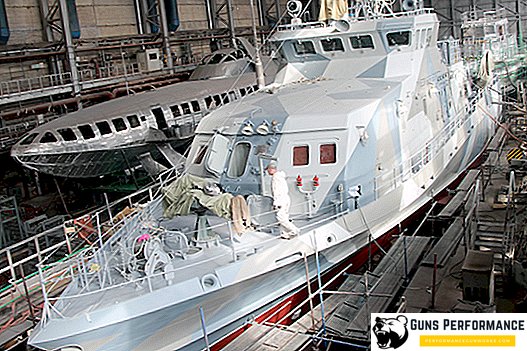
In 2014, another Russian company joined the production of ships of project 21980 - the Vympel RCC. The Russian military department signed a contract with the plant for the construction of six project ships. In the same year several boats were launched, after tests they became part of the Black Sea and Pacific Fleet.
In 2018, the boats that are part of the Black Sea Fleet received their own names: “Suvorovets”, “Cadet” and “Kursant Kirovets”. Boat number P-104 took part in the naval parade dedicated to Victory Day, which was held in St. Petersburg.
Bookmarks and launches of boats of project 21980 continued in 2018, work began on ships for the Northern Fleet. Currently (information as of the end of 2018), the Russian Navy has 12 boats: five of them are part of the Black Sea Fleet, two are of the Northern Fleet, one PDT is in the Baltic and the Caspian Sea and three are in the Pacific Fleet. Work is underway on four boats, another three "Rook" signed contracts.
Description of the construction of the project 21980 "Rook"
The anti-sabotage boat "Rook" is a single-deck ship with a fairly developed superstructure and transom stern. For loading operations, it is equipped with a crane. The crew of boats of this project consists of eight people. Ship autonomy is five days.
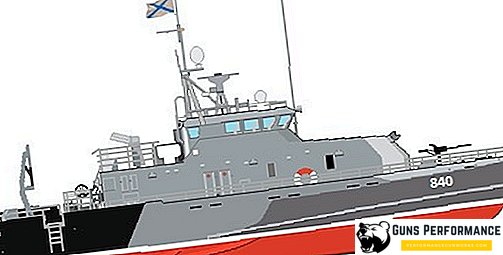
The main power plant of the ship is made on the basis of MTU Friedrichshafen (Germany) diesel engines. It allows boats of this project to reach speeds of 23 knots.
In 2014, due to Western sanctions imposed on Russia, deliveries of German engines were discontinued. They were replaced with Chinese counterparts manufactured by Henan Diesel Engine Industry Co.LTD. Deliveries were made through the Russian company Marine Propulsion Systems. The new power plant includes two engines TBD620V12, two reverse gear and couplings.
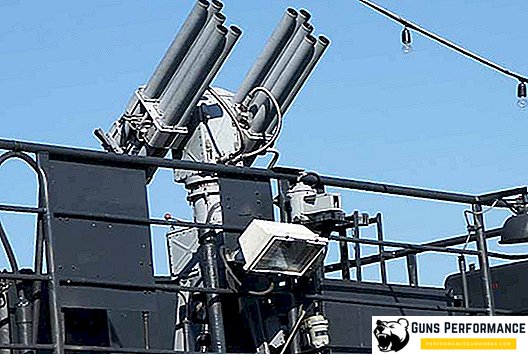
In March of this year, Russian media reported that both Chinese engines failed during the first test. Because of this, the Russian subcontractor "Sea propulsion systems" were imposed penalties in the amount of 750 thousand rubles. True, now it is not entirely clear what engines will be equipped with new ships.
The boats of project 21980 are equipped with a highly sophisticated armament complex, modern radio-electronic and radio-technical equipment, as well as diving equipment, which allows for the inspection of the bottom and underwater objects.
The complex of the ship’s equipment includes the Radar MR-231 "Pal", which is intended for the safety of navigation and provides a circular radar survey. This radar can perform automatic tracking of 50 targets for a long time and has a built-in system for identifying the nationality of the target. Information about the environment is superimposed on a digital map of the sailing area of the ship.
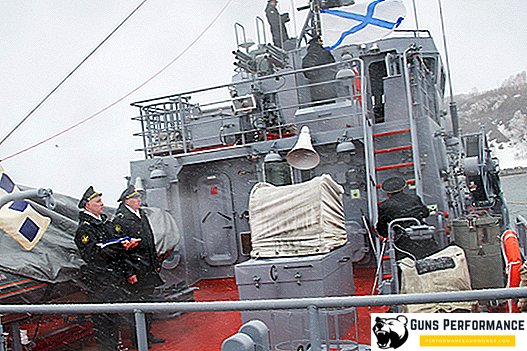
Also, the equipment of the boats of this project includes the automated communication complex AKS R-779-9, the multifunctional lighting complex for near air and surface conditions MTK-201M3, the integrated bridge system IMS Mostik-21980, a hydroacoustic station for detecting underwater sabotage forces and means of MG- 757 Anapa.
Hydroacoustic station "Anapa" can detect combat swimmers at distances of 300 meters in the sector of 360 degrees. Station antennas are on a special device that extends from the hull of the vessel. During the tests, the underwater conditions of the harbor, the bottom and the water column were investigated using the station. When moving at a speed of about six knots, various objects at the bottom, mooring walls, anchor chains at distances up to 300 meters were clearly observed.
To perform combat missions, the crew of the boat can use the Kalmar search and survey complex, which allows the bottom to be explored at depths of up to 200 meters, as well as the Falcon underwater remote-control vehicle developed by Saab Seaeye Co.LTD. He is able to reach depths of 300 meters.
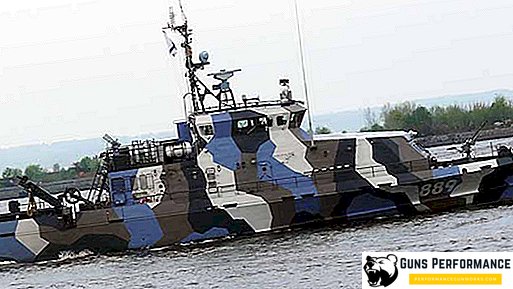
According to the results of the state tests conducted, the Kalmar complex was modernized, and in the future it is planned to create a new, more sophisticated, uninhabited underwater descent module for boats of this project.
Already on the second ship of this project, a special diving complex with a pressure chamber was installed, which can be used during rescue, prospecting, technical and other types of underwater work. You can also add that the equipment of boats "Rook" displays data about the underwater situation in real time.
Despite its rather modest size, the boat "Rook" is seriously armed. On board there are four portable missile complex "Needle" to combat low-flying air targets, as well as a thumb machinegun installation of 14.5 mm caliber. However, the main weapon designed to perform the main task of the boat - the fight against enemy combat swimmers - are anti-sabotage grenade launchers. There are two types of them on board the Rook: a ten-barrel, 55-mm caliber, a 98U remote-controlled grenade launcher complex and a portable DP-64 Nepryadva portable DP-64 grenade launcher.
The 55-mm grenade launcher ensures the defeat of underwater saboteurs at distances of up to 500 meters and a depth of up to 40 meters. The high-explosive grenade RG-55M, which is used by 98U, has a guaranteed damage radius of up to 16 meters from the entry point. This weapon works in conjunction with the hydroacoustic station "Anapa", with the help of which aiming takes place.
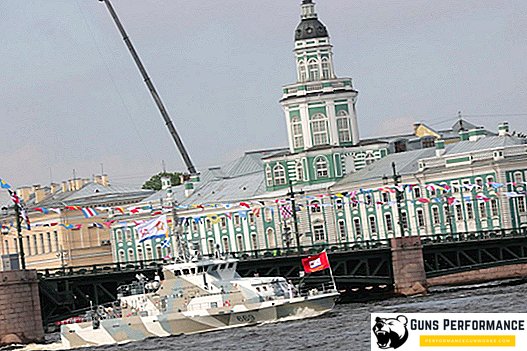
DP-64 "Nepryadva" is used to solve similar problems, it can hit underwater targets at distances of 400 meters and a depth of 40 meters. Ammunition grenade provides a strike radius of 14 meters.
The 14.5-mm sea thumb machine-gun installation allows you to confidently hit surface, air and coastal lightly armored targets at distances of up to 2 thousand meters.
Based on the foregoing, it can be concluded that boats of project 21980, despite their rather modest dimensions (displacement of 138 tons, length of 31 meters, draft of 1.85 meters), are able to solve a whole range of combat missions and confidently protect their bases from sabotage and terrorist threats.


